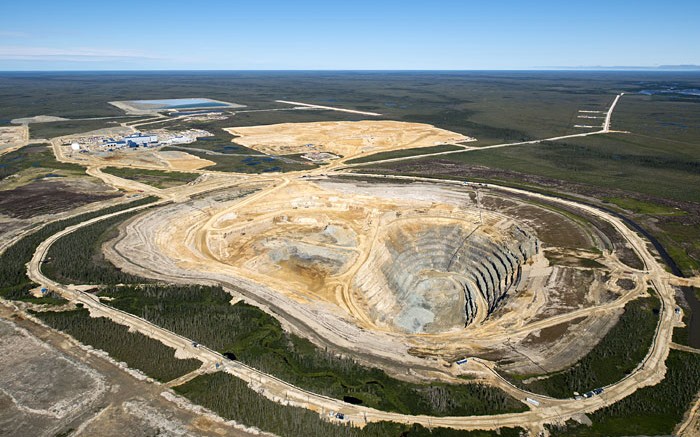In its first detailed public report on the state of the diamond industry, diamond miner and retailer De Beers paints a picture of an industry that will likely struggle to meet demand while facing increasing competition from other luxury products.
Global diamond jewellery sales — which reached a record US$79 billion in 2013 — is expected to grow, in particular in China and India.
“Even under scenarios of volatile or weaker global economic growth, demand for diamonds is expected to show positive real growth in the next decade,” De Beers’ Insight Report says.
China now accounts for 13% of total demand, up from less than 3% a decade earlier, and De Beers CEO Philippe Mellier sees Chinese demand growing at more than 10% annually for many years. There is a lot of room for growth in China, as personal ownership rates for diamond jewellery in top urban cities surveyed is 20% — up from 10% in 2003, but still far below the U.S. rate of 70%.
On the supply side, meanwhile, rough diamond production peaked at 176 million carats in 2005 and likely won’t revisit such highs again.
Rough diamond production increased by 7% to 146 million carats worth US$18 billion in 2013. It is projected to rise over the next several years as new mines come on-stream, with production peaking in 2020.
Unless major discoveries are made soon, production is likely to decline after 2020.
At the same time, diamond production will become more costly as mines mature and become more complex, deeper and more remote.
In response, miners will have to invest in technological and other innovations to increase productivity, De Beers predicts.
De Beers produces 33% of the world’s diamonds by value, followed by Russia’s Alrosa, which has a 26% share.
Competition from other luxury products, such as travel, could also erode the diamond industry’s future, despite substantial demand.
The answer to that, De Beers says, is marketing and branding.
The industry must invest in marketing to ensure diamonds remain a hot commodity, reach younger consumers and prevent consumer dollars from straying toward other luxuries.
Branding is also an important strategy, as branded diamonds can command a premium. In the U.S., which accounts for 40% of diamond demand, the appetite for branded diamonds is growing. In 2013, one-third of U.S. consumers looking for diamond engagment rings bought branded rings, up from only 7% in 2002.
De Beers launched its Forevermark brand in China in 2008, and in North America in 2011.
The report predicts consolidation across the industry’s downstream (retail) and mid-stream (cutting and polishing) sectors.
“Scale and differentiation will be increasingly important factors for future success, across all parts of the value chain,” the report reads. “The industry is likely to continue to consolidate and integrate [including through vertical integration]. It is also expected to continue professionalizing, modernizing and becoming more transparent in the years to come — to the benefit of all those involved.”
Widespread adoption of sophisticated technology that can detect synthetic or treated diamonds will also play a part in safeguarding public confidence in mined diamonds.
The report noted that the importance of online sales is increasing, with one in six diamond jewellery purchases in the U.S. made online in 2013 — 30% higher than 2011.
The report, which De Beers says is the first of what will become an annual publication, also had notes on exploration, including statistics about the difficulty of finding a diamond mine.
Of the 7,000 kimberlites pipes that have been sampled over the past 140 years, 1,000 were diamondiferous, but only 60 were rich enough to develop. Of those, only seven were Tier 1 deposits with more than $20-billion worth of reserves.
And despite $7 billion in spending on diamond exploration since 2000, only one major deposit has been discovered in that time: Rio Tinto’s (NYSE: RIO, LSE: RIO) Bunder project in India.
Lastly, as a result of the capital crunch in the mining industry, exploration spending is almost half the $1 billion spent at the peak of diamond exploration in 2007. Of that, the world’s top-two diamond producers — De Beers and Alrosa — accounted for almost 75% of all diamond-exploration spending in 2013.
Download the entire report at www.debeersgroup.com.


Be the first to comment on "Challenges abound for diamond industry, despite growing demand: De Beers"